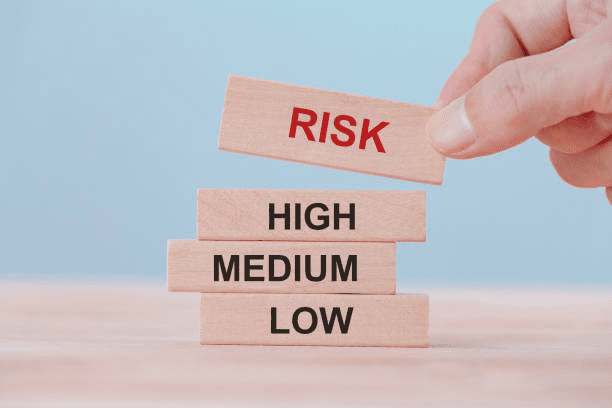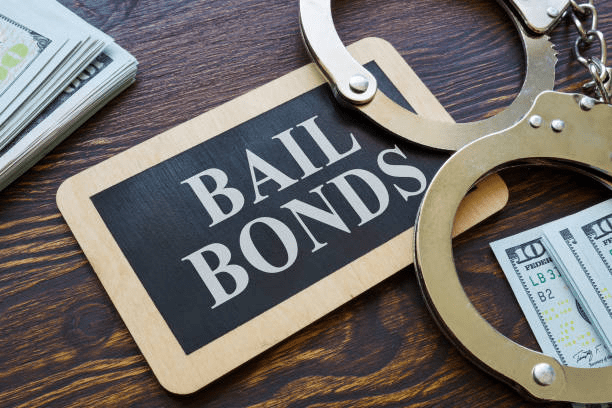Are you looking for an investment opportunity that balances potential returns with a lower risk profile? A secured bond might be the answer you’ve been seeking. In this blog post, we’ll explore the world of secured bonds, discuss their benefits and risks, and provide guidance on how to start investing in these debt instruments.
Short Summary
Secured bonds are a type of debt instrument backed by assets, offering investors lower risk and increased protection.
Secured bonds have the potential for collateral value fluctuations and legal challenges in case of issuer default.
Investing in secured bonds requires research into issuers and diversification to reduce risks while maximizing returns.
Exploring Secured Bonds
In this post, we’ll delve into the basics of secured bonds, examine the various types available, and highlight the differences between secured and unsecured bonds.
Definition and Basics
A secured bond is a debt instrument collateralized by specific assets, such as real estate, manufacturing plants, industrial equipment, revenue streams, intellectual property, inventory, and financial assets such as stocks and bonds. Issuers of secured bonds comprise a wide range of entities, ranging from corporations to government agencies and municipalities. The creditworthiness of the issuer and the value of the assets employed as collateral determine the bond’s valuation. This form of investment offers a safety net for bondholders, as they have a priority claim on the collateral if the issuer defaults.
However, there’s no such thing as a risk-free investment. If the borrowers fail to fulfill their obligations associated with the loans used as security, bondholders may incur losses. Nevertheless, the presence of collateral makes secured bonds a safer bet compared to their unsecured counterparts.
Types of Secured Bonds
There are several types of secured bonds to consider, each with its own unique set of characteristics. Some common examples include mortgage bonds, equipment trust certificates (ETC), revenue bonds, and asset-backed securities (ABS).
Mortgage bonds are secured assets, relying on both the titles to borrowers’ homes and mortgage payments as a source of income. This ensures that bondholders will ultimately receive payment from borrowers. Mortgage backed securities, similar to mortgage bonds, are also secured by mortgage payments.
Equipment trust certificates are secured by equipment, such as airplanes, trains, or trucks. If the issuer defaults on the bond payments, the bondholders can seize the equipment and sell it to recoup their losses. ETCs are typically issued by companies that need to finance the purchase of equipment.
Revenue bonds are a type of municipal bond. They are secured by the revenue generated from a particular project, like toll roads or airports.
Asset-backed securities are bonds that are secured by a pool of assets, such as car loans, student loans, or credit card debt. If the issuer defaults on the bond payments, the bondholders can seize the assets and sell them to recoup their losses. ABS are typically issued by financial institutions.
By understanding the various types of secured bonds, investors can make informed decisions about which bonds best suit their investment portfolios.
The Benefits of Investing in Secured Bonds
When it comes to investing, secured bonds offer several advantages over unsecured bonds. Let’s take a closer look at these benefits and understand why secured bonds might be an attractive option for investors seeking a safer and more stable investment.
Lower Risk
As mentioned earlier, the presence of collateral makes secured bonds less risky than unsecured bonds. This means that even if the issuer defaults on their debt obligations, bondholders can still recover their investment by claiming the collateral. This safety net reduces the overall risk associated with secured bonds, making them an attractive investment option for conservative investors.
Of course, investing in secured bonds still carries risks, such as fluctuations in the value of the collateral, interest rate risk, and credit risk. However, the presence of collateral helps to mitigate these risks and makes secured bonds a more stable and secure investment compared to unsecured bonds.
Priority Claim on Collateral
In the event of an issuer default, bondholders have a priority claim on the collateral securing the bond. This means that they will be among the first to be repaid, even before other claimants who may not have any collateral backing their investment. This preferential treatment increases the likelihood of bondholders recovering their investment.
However, it is crucial to note that having a priority claim on collateral does not guarantee a full recovery of the invested amount. Factors such as the value of the collateral and potential legal challenges during asset recovery can impact the bondholder’s ability to recover their investment.
Risks and Disadvantages of Secured Bonds

Despite their benefits, secured bonds are not without risks and disadvantages. To better understand these risks, let’s dive deeper into the issues of collateral value fluctuations and legal challenges associated with secured bonds.
Collateral Value Fluctuations
The value of collateral backing secured bonds may fluctuate, affecting the bond’s overall risk profile. Factors such as market conditions and the type of collateral can cause variations in the value of the collateral, which in turn impacts the bond’s valuation.
These fluctuations can expose investors to losses, liquidity risk, changes in risk ratings, and even moral hazard between a bank and a borrower. It is essential for investors to stay informed about the value of their collateral and be prepared to act accordingly if the value changes significantly.
Legal Challenges
When it comes to claiming collateral in case of issuer default, legal challenges may arise. Investors’ claims to collateral can be contested in court, potentially delaying or reducing the amount they can recover.
To address legal challenges, investors can consult legal counsel and undertake necessary measures to protect their interests. While legal challenges can be daunting, understanding the potential risks and being prepared to face them can help investors navigate the complexities of investing in secured bonds.
Issuer Defaults
An issuer default with secured bonds occurs when the issuer of the bonds is unable to make the required payments to the bondholders. This can happen for a variety of reasons, such as financial difficulties, bankruptcy, or natural disasters.
If an issuer defaults on a secured bond, the bondholders have the right to seize the collateral that was pledged to secure the bond. This collateral can then be sold to recoup the bondholders’ losses. The amount of collateral that is available to the bondholders will depend on the terms of the bond and the value of the collateral.
In some cases, the collateral may not be enough to cover the full amount of the bond. In this case, the bondholders may only be able to recover a portion of their investment. Additionally, the process of seizing and selling the collateral can be time-consuming and expensive, which can further reduce the amount of money that the bondholders recover.
Secured Bond vs. Unsecured Bond
We’ve discussed the benefits and risks of secured bonds, but how do these investments compare to unsecured bonds? Let’s compare the risk and interest rates between secured and unsecured bonds to get a better understanding of their differences.
Risk Comparison
As previously mentioned, secured bonds are generally considered less risky than unsecured bonds due to the presence of collateral. In the case of a default, bondholders can claim the collateral and potentially recover their investment. On the other hand, unsecured bonds rely solely on the creditworthiness of the issuer, making them a more precarious investment choice.
Some examples of unsecured bonds:
Corporate bonds are unsecured bonds issued by corporations. If the issuer defaults on the bond payments, bondholders have no collateral to fall back on.
Municipal bonds are unsecured bonds issued by state and local governments. If the issuer defaults on the bond payments, bondholders may be able to recover some of their losses through bankruptcy proceedings.
Interest Rates
Interest rates on secured bonds are typically lower than those on unsecured bonds, reflecting the reduced bond interest risk for investors. This is because bond issuers are willing to offer lower interest rates on secured bonds due to the presence of collateral. Unsecured bonds usually carry higher interest rates to compensate investors for the increased risk associated with these investments.
Interest rates paid on secured bonds vary depending on:
Credit quality. The credit quality reflects the ability of the issuer to repay the bond and the security of the collateral. Credit rating agencies, such as Standard & Poor’s, Moody’s, or Fitch Ratings, assign ratings to bonds that reflect their creditworthiness.
Time to maturity. Rates vary depending on the duration of the investment.
Market interest rates. Issuers determine rates relative to the general cost of borrowing in the market.
Summary of Differences
Here is a table that summarizes the key differences between secured and unsecured bonds:
| Feature | Secured Bonds | Unsecured Bonds |
|---|---|---|
| Collateral | Yes | No |
| Risk | Lower | Higher |
| Interest rates | Lower | Higher |
| Yield | Lower | Higher |
| Examples | Mortgage bonds, asset-backed securities | Corporate bonds, municipal bonds |
Understanding Secured Bail Bonds

Secured bail bonds are a specific type of bond used in the legal system, distinct from the investment-grade secured bonds discussed earlier in this post. These bonds play a crucial role in ensuring defendants appear in court as required.
Let’s explore the definition and function of secured bail bonds and compare them to unsecured bail bonds.
Definition and Function
A secured bail bond requires collateral, such as property, to secure the bond and ensure the defendant’s appearance in court. This type of bond is particularly useful when dealing with defendants who pose a higher flight risk or have a history of failing to appear in court.
If the defendant fails to appear in court, the property used to secure the bail bond will be forfeited to the court in perpetuity. This provides an additional incentive for the defendant to comply with court orders and reduces the risk for bail bondsmen.
Secured vs. Unsecured Bail Bonds
Unsecured bail bonds, on the other hand, do not require collateral but instead rely on the defendant’s promise to appear in court. This poses a higher risk for the bail bondsman, as they have no collateral to fall back on if the defendant fails to appear.
Given the differences in risk levels, secured bail bonds may require a lower premium compared to unsecured bail bonds. The choice between secured and unsecured bail bonds will depend on the defendant’s history, the nature of the crime, and the bail amount set by the court.
How to Invest in Secured Bonds

Now that we’ve explored the world of secured bonds, you might be wondering how to start investing in them. To invest in secured bonds, investors should research the issuers and diversify their bond portfolios.
Before diving into the investment process, let’s discuss how to research issuers and the importance of diversification.
Related Article: What Are Capital Markets? An Overview Of Instruments, Examples, And How It Works
Open a Brokerage Account
A brokerage account allows you to buy and sell bonds. A broker would facilitate bond purchases in the secondary market and not directly from the issuer.
Research Issuers
It’s crucial to thoroughly research the creditworthiness of bond issuers before investing in secured bonds. Investors can examine the issuer’s financial statements, credit ratings, and other publicly available information to gain insight. Consulting a financial advisor or another expert may also prove beneficial in determining the issuer’s creditworthiness.
Credit ratings, assigned by independent rating agencies, are a valuable tool for evaluating the creditworthiness of bond issuers. By understanding the issuer’s credit rating, investors can better assess the risks associated with investing in a particular bond.
Diversification
Diversifying investments across various types of secured bonds can help mitigate risks and optimize returns. Some strategies for diversification include blending different assets, focusing on high-quality bonds, examining different types of bonds, allocating across different sectors or industries, and utilizing bond funds or ETFs.
By diversifying their bond portfolios, investors can spread their risk and increase the potential for higher returns, making secured bonds a valuable addition to any investment strategy.
Related Article: Understanding Warrants Vs Options: A Comprehensive Guide
Place an Order
Gather all relevant information about the bond — the name of the issuer, the bond symbol, and the number of bonds you want to buy (or capital you wish to invest) — to buy the bond through your brokerage. Most bonds have minimum size requirements you will need to exceed.
Summary
In conclusion, secured bonds provide investors with an investment opportunity that balances potential returns with lower risk, thanks to the presence of collateral. By understanding the basics of secured bonds, their benefits and risks, and the differences between them and unsecured bonds, investors can make informed decisions about incorporating these debt instruments into their portfolios. With thorough research and a diversified investment strategy, secured bonds can be a valuable addition to any investor’s financial plan.
Frequently Asked Questions
What is an example of a secured bond?
An example of a secured bond is mortgage-backed securities, which are backed by the titles to a residence, the physical assets of the borrower, as well as income from mortgage payments.
Additionally, they may be collateralized by property, equipment or an income stream.
What happens when a bond is secured?
When a bond is secured, cash or some form of property or real estate is provided as collateral to guarantee that the defendant will appear in court on their court date. If needed, a bail bondsman can post bail on the defendant’s behalf for a fee.
What is the difference between secured and unsecured bond?
A secured bail bond requires collateral to be put up in the event of a breach of contract, whereas an unsecured bond does not require any upfront money or collateral. As such, a secured bond carries more risk for the defendant.
What are the benefits of a secured bond?
Secured bonds are a safer investment option than stocks and provide investors with a fixed income, albeit at a lower interest rate. In case of default, the investor is also provided protection by first right of access to certain collateral.
What assets can be used as collateral for secured bonds?
Investments, plant and equipment, and real estate can be used as collateral for secured bonds.




